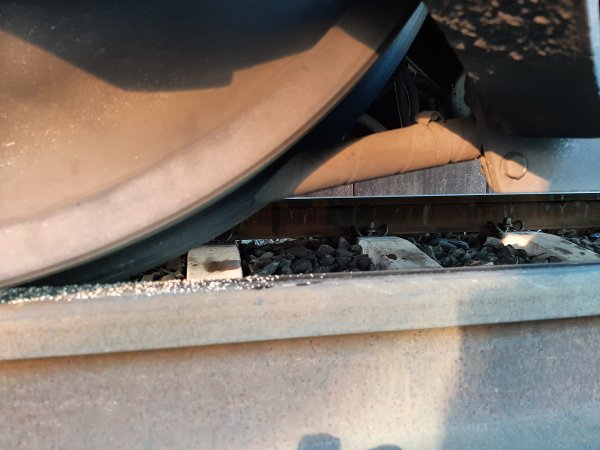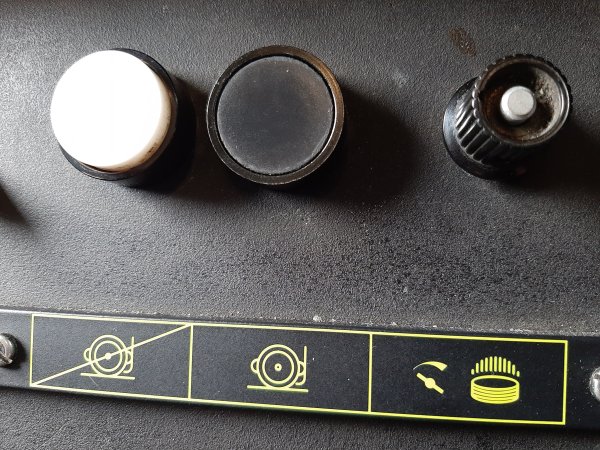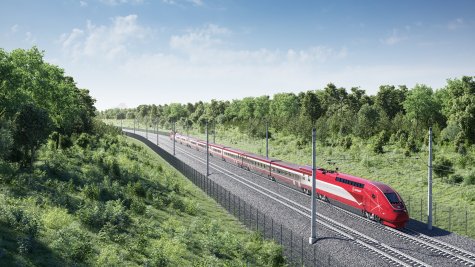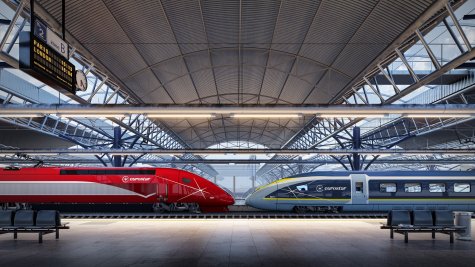Delay? Autumn? Leaves!
This year the leaves are coming down a bit later than usual. But they are falling and NS needs to take measures. But why exactly? And what about in other countries?
Nico has been a train conductor since 2017 and has been operating the Eurostar (formerly Thalys) to Brussels since 2020. He is keen to tell us what that is like.
Nico is also a driver on the Eurostar that goes to London after Brussels. In this article, the Eurostar mentioned is the red train that continues to Paris.

Leaves on the track
It recurs every autumn: train delays due to falling leaves. In many places, there are trees next to the tracks and the leaves cause trains to skid when braking and reduce their ability to accelerate. 'In the Netherlands, there is a solution,' Nico explains. 'Some trains smear a kind of gel on the tracks, making them more slippery. This happens before and after stations. Because when accelerating and braking you suffer the most from slipperiness. That works well in the Netherlands but we do not benefit from it at Eurostar'.
Combating slippiness at Eurostar
'At Eurostar it works very differently'. Nico explains: 'On both sides of the train is a locomotive with engines. Engines with a sanding system. We use them in slippery weather. They drop sand automatically. So if the train starts to skid when you give traction, the sanding system will turn on after a few seconds'.
Giving traction? 'Yes, giving traction sounds so weird,' laughs Nico. 'We call that giving traction, speeding up, or accelerating. When skidding, the sanding system turns on and off automatically. If you start skidding when braking, it will also drop sand. Skidding, dropping sand. There is a black button you can use to drop sand manually. With the yellow button next to it, you can suppress automatic dropping'.

Sand comes out of the pipe onto the rails
Dropping sand in Belgium
Does that work the same way across the border? 'Yes,' Nico explains, 'it works the same way in Belgium. Only at interchanges there, we are not allowed to spread sand and then have to block it with the yellow button.'

Buttons of the sanding system
Slippery, slippier, slippiest
‘Autumn has come late this year. It is now at its slippiest. One notorious spot is at Mortsel and Mortsel-Oude God stations in Belgium. Just after Antwerp, seen from our end. There are trees right next to the tracks there. There is no high-speed track there.'
There must be very few trees next to the high-speed track? 'Yes, certainly less than on the Veluwe! Even within the Netherlands, there are no trees along the high-speed track. That is on purpose. You do not want a tree on the track when you're driving 300 km/h'.
Square wheels and flat areas
‘You get square wheels because of the slippery tracks. If you brake often enough and keep sliding along the track, bits of metal will naturally come off. Then, the wheels are no longer nicely round but get flat areas. Then you get a 'kedeng, kedeng’ sound. The faster you go, the less it bothers you. It may be uncomfortable, but in terms of safety there is nothing wrong'.
Every season has its own difficulties
Do you also have problems in winter and summer? 'Yes, in summer the compressors can fail. The air conditioning then goes out too. It then gets bloody hot in the train. This happened last summer in France. And snow in winter. But I have never experienced Eurostar not being able to run because of frozen switches. Eurostar does suffer from frost when there is hoarfrost on the catenary. Because of the layer of ice on the catenary, the train 'thinks' that there is no voltage and stops running. That is sometimes inconvenient.'

Unsafe situations?
Nico explains that leaves on the track never cause unsafe situations. 'You pull up a little slower, you brake a little slower. You never brake too late. Certainly not on the high-speed track. The high-speed track has a good safety system, ETCS. If you cannot brake in time, that system stops the train immediately'.
Have you never slid by a signal? 'No' says Nico, 'not even with the domestic NS trains. Sometimes, I would brake, nothing would happen, then I would put it in fast brake position, the magnets would come on the track and I would stand still'.
Does that not scare you? 'Well, no. Because you notice it is slippery early on and then you take it easy. You must not push the limits in autumn. You brake a bit earlier. You want to avoid stopping the train with a bang. That is safe, but not so comfortable for the passengers'.
Kedeng, kedeng
You described the sound of the square wheels as 'kedeng, kedeng'. In Guus Meeuwis' song, he says the train was delayed 10 minutes. Do you think he wrote the song in autumn? 'Yes, hahaha, that's very possible! He went to his sweetheart in a train with flat areas'!
Do you also have a question?
Have you been walking around for ages with a burning question you would like an answer to? Then write it down in the field below. We will take a closer look at the most frequently asked questions. Please note: do not enter any personal information, only your question!


